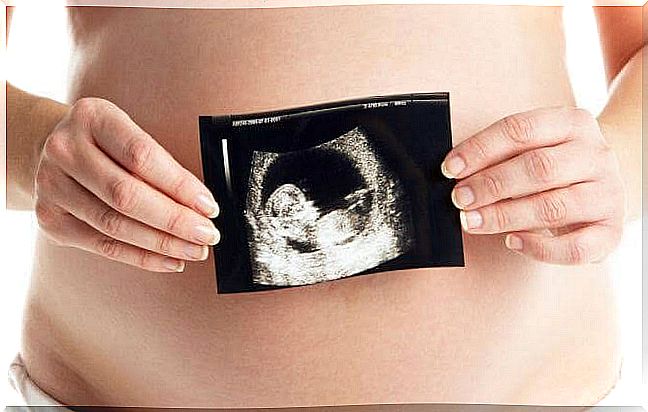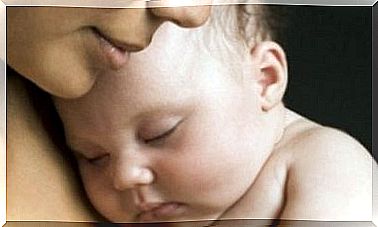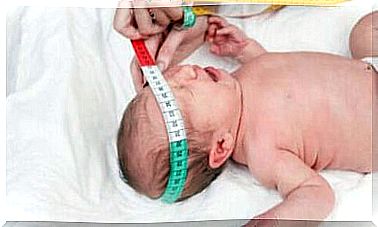What Is Vanishing Twin Syndrome?

There are certain disorders associated with twin pregnancies. One of these is the disappearing twin syndrome. This anomaly was first discovered in 1945. In many cases of twin or multiple pregnancies, fetuses sometimes disappear without us realizing it.
We have often heard stories of cases where two or more babies were identified in the early stages of pregnancy. But after a while, one of the identified fetuses is no longer present.
This is also known as the ‘disappearing twins’. The fetal tissue fades without apparent consequence. According to experts, it seems that the fetus has disappeared. In fact, an involuntary abortion took place.
How is Vanishing Twin Syndrome Diagnosed?

Before multiple ultrasounds were performed during pregnancy, it was difficult to identify the vanishing twins. However , today ultrasounds are already performed from the beginning of the pregnancy.
Twins or multiples are now discovered in the first trimester. Therefore, a subsequent ultrasound will show if anything has changed. For example, the twins’ heartbeat may no longer be detected.
Previously, it was only noticed after birth that one child had disappeared. The placenta was then examined. It turned out that one of them had died. Today, a more precise diagnosis can be made. This can already be done in the first seven weeks of pregnancy.
When the twin mother goes for a prenatal checkup, she may find that a baby has gone missing. While this is often a surprise, in many cases the mother has already experienced miscarriage symptoms. In this situation, an ultrasound shows that one of the children survived.
Vanishing twins syndrome occurs in up to 30% of multiple pregnancies. It has been found to be more common in mothers over the age of 30. This estimate is consistent with the given diagnosis. This has been established because ultrasound is already used in the early stages of pregnancy.
Why Does Vanishing Twin Syndrome Occur?

The real causes of vanishing twin syndrome are unknown. However, there are sufficient indications. These indicate that the vanishing twins would have suffered from genetic abnormalities from the beginning of the embryonic stage. This assumption was obtained from analysis of the placenta after delivery.
In that sense, it’s not something that just happens suddenly. The vanishing twins had abnormalities from the start. Often the fetal tissue displays chromosomal abnormalities. The surviving twins do not have these abnormalities. Implantation in the wrong way can also be a possible cause.
Possible consequences for the surviving twin half
The survivors in this case are the fetuses that have developed further. The mother herself is also included in this. Depending on the phase in which the loss occurs, different outcomes are possible.
For example, when the disappearance occurs in the first trimester , there are often no symptoms or serious consequences. However, this depends on why the vanishing twins actually disappeared.
If the loss occurs in the second or third trimester, there may be increased risks to the surviving baby. One possible outcome is, for example, cerebral palsy.
When the fetus dies in the embryonic stage, the placenta, fluid and tissue are reabsorbed. This is what happens in most cases. The surviving twin presses on the tissue of the missing twin. This will completely flatten it.
Judging by the flattening of the tissue, two differences can be identified at birth:
- Flattened fetus: when an easily recognizable fetus is found.
- Absorbed fetus: Absorption and/or disappearance of the fetus is only detected by analysis of the placenta or by loss of fluid.
Vanishing twin syndrome can be identified by the appearance of bleeding. Pelvic pain or uterine cramps can also occur during the first trimester. See a doctor as soon as possible if you notice any of these symptoms. In general, the mother and the remaining twins do not require any treatment.
However, if the disappearance occurs in the second or third trimester, then there is an increased risk of pregnancy. An ultrasound will then show whether the pregnancy is still viable. If not, a planned abortion may be warranted. But a spontaneous, involuntary abortion can also be expected.









